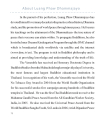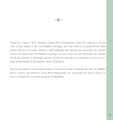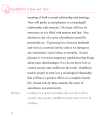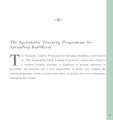Buddhist Monks : ค้นหาหนังสือธรรมะ หน้า 5 / 11
หน้าหนังสือทั้งหมด

34
The Fearless Brahmana and the Art of Letting Go
The monks asked him, "Friend Uggasen, had you no fear as you descended from that pole sixty cubits in height ?" Uggasen replied, "Friends, I have no fear." The monks said to the Teacher, "Reverend sir
In this passage, Uggasen demonstrates a profound state of fearlessness, attributed to having severed all attachments. The monks question his claim, but the Teacher explains that true freedom from fear

58
Luang Phaw Dhammajayo: A Journey of Buddhist Leadership
Luang Phaw Dhammajayo (The Most Venerable
Dhammajayo Bhikkhu) was born in Singburi Province,
Central Thailand, on April 22, 1944. He has followed
and been self-educated in Buddhism since his
childhood
Luang Phaw Dhammajayo, born on April 22, 1944, in Singburi, Thailand, is a distinguished Buddhist monk and the founder of Dhammakaya Temple. After earning his Economics degree from Kasetsart Universit

76
Luang Phaw Dhammajayo: A Beacon of Peace and Buddhism
About Luang Phaw Dhammajayo
In the pursuit of his perfection, Luang Phaw Dhammajayo has
devoted himselfovermany decadestothepracticeofmeditation, Dhamma
study, and the promotion of world peace through
Luang Phaw Dhammajayo has spent decades dedicated to meditation and Dhamma study, promoting world peace through inner peace. His teachings focus on attaining the Dhammakaya, the true nature of peace a

7
Exploring Buddhist Meditation and Its Significance
Preface
Not a month goes by these days without another important article being published on some newly uncovered Buddhist text, and among the discoveries are ancient materials about Buddhist meditati
This preface discusses the ongoing discoveries in Buddhist meditation texts and the efforts of Venerable Phrakrupaladnayokwarawat (Sudhammo Bhikkhu) in promoting scholarly exploration. It emphasizes t

16
Launch of the Journal of the Dhammachai International Research Institute
Introduction
This collection of articles marks the launch of the Journal of the Dhammachai International Research Institute (JDIRI). The articles presented here indicate some of the perspectives on B
This collection of articles marks the launch of the JDIRI, showcasing perspectives on Early Buddhism and meditation studies. The journal aims to publish research on ancient manuscripts and esoteric pr

32
Dhamma-kāya in the Pali Canon
Dhamma-kāya in the Pali Canon¹
Chanida Jantrasrisalai
I. Why ‘Dhamma-kāya’ in the ‘Pali Canon’?
The term dhamma-kāya/dharmakāya appears in Buddhist literature of different schools. Previous scholars
The study investigates the term dhamma-kāya as presented in the Pali Canon, aiming to provide a comprehensive analysis that has been overlooked in previous studies. While many references have been mad

34
Understanding Dhammakāya in Early Buddhist Thought
II. The Different Approach
A fairly established academic understanding has settled regarding the term dhammakāya in the Pali canon, that it was used merely in the sense of the ‘Buddha’s teachings.’ In
The term 'dhammakāya' in the Pali canon is understood as representing the Buddha's teachings. It is established through several canonical passages that equate the Buddha with dhamma. Notable reference

91
Exploration of Theravāda Buddhist Manuscripts in Sipsong Panna
literature.9 It is notable that the Agama Sutras (阿含经) discovered in the Xishuangbanna region are incomplete. For example, the Hinayana Agama should have contained the Khuddaka Patha (小品), Dharma-phra
The Agama Sutras found in the Xishuangbanna region are notable for their incompleteness. The Hinayana Agama is expected to contain various texts that are partly missing. According to The Complete Coll

121
The Influence of An Shigao on Mindfulness Breathing Meditation in Eastern Han China
In this paper I explore the connections between An Shigao and the introduction of the Indian Buddhist meditation technique of mindfulness breathing meditation, or ānāpānasmṛti, into Eastern Han China.
This paper examines An Shigao's role in introducing the Indian mindfulness breathing meditation technique, ānāpānasmṛti, into Eastern Han China. The phrase「息中具有四大。 而心在中」suggests that the mind should f

156
A ‘New’ Early Chinese Buddhist Commentary
Zacchetti, Stefano. 2008 "A ‘New’ Early Chinese Buddhist Commentary: The Nature of the Da Anban Shouyi Jing (T 602) Reconsidered." Journal of the International Association of Buddhist Studies 31: 421-
This research article by Stefano Zacchetti delves into the nature of the Da Anban Shouyi Jing (T 602), reconsidering its significance in early Chinese Buddhist commentary. The study provides insights

63
Charumati Buddha Vihar and Buddhist Mission in Nepal
Charumati Buddha Vihar and resident of Charumati Buddhist mission Nepal / วัด จารุมาติวิหาร ประเทศเนปาล
๒๖. โโล่งวัดและใบประกาศเกียรติคุณ จาก Prof. Dr. Mitomo Kenyo / ค.ศ. มิโดเมะ เกนโญ พระมหาเกระระด
Charumati Buddha Vihar in Nepal is notable for its contributions to Buddhism and its recognition with various honors from esteemed Buddhist figures worldwide. This includes accolades from Prof. Dr. Mi

33
Exploring Buddhist Texts and Influence
Bernhard, Franz.
1970 "Gåndhārī and the Buddhist Mission in Central Asia." Ánjali: Papers on Indology and Buddhism: A Felicitation Volume Presented to Oliver Hector de Alwis Wijesekera on His Sixtieth
This collection of works explores the significant contributions to Buddhist scholarship, including analyses of the Gåndhārī texts, the investigation of the Därșanatika, and the characteristics of the

20
The Origins and Impact of the Dhammakaya Foundation
The Dhammakaya Foundation itself was established on 20 February 1970. Buildings were kept to a minimum and emphasized finesse, easy maintenance, cleanliness and durability. The foundation stone for th
The Dhammakaya Foundation was established on 20 February 1970 with a focus on minimalistic yet durable structures for spiritual practice. H.R.H. Princess Maha Chakri Sirindhorn provided the foundation

20
The Journey of Chaiyaboon and the Establishment of Dhammakaya Temple
Here is the extracted text from the image:
---
Chaiyaboon achieved a high level of success in the Dhammakaya meditation practice, and Khun Yai assigned him to teach meditation to others.
Chaiyaboon
Chaiyaboon, a successful practitioner of Dhammakaya meditation, pursued his true calling as a Buddhist monk after graduating from Kasetsart University in 1969. Known as Luang Por Dhammayenyo, he becam

127
The Importance of Studying Lord Buddha's Teachings
During the course of their education, Luang Phaw Dhammajayo would like students to see the value of their studies of the Lord Buddha’s teachings, and wants them to be proud and love their studies. Mor
Luang Phaw Dhammajayo emphasizes that students should value their studies of the Lord Buddha's teachings and take pride in it. He encourages them to study diligently and understand the truth of Buddhi

130
Systematic Training Programme for Spreading Buddhism
…y increases the knowledge of Buddhist doctrine and practice to the participants, but also gives the Buddhist monks who are scattered around the country the opportunity to meet and share their experiences in the tea…
The Systematic Training Programme for Spreading Buddhism, initiated from 1999 to 2007, has successfully trained 8,090 monks from 5,833 temples across Thailand, promoting the teachings of the Buddha. T

77
Re-evaluating the Concept of Dhammakāya in the Pali Canon
No-one can upset the (Padumuttara Buddhu) entire mine of jewels, who is demonstrating the dhammakāya; having seen him, who is not pleased?
In order to clarify further regarding the precise connotation
This study revisits the term dhammakāya in the Pali canon, highlighting its significance in Buddhist teachings. By examining the Sambuddha-sutta, the relationship between 'the path' and dhammakāya is

56
Concepts in Buddhist Terminology
สังขาร (sankhara) compounded things; component things; conditioned things; kamma formations; mental formations; mental predispositions; essential conditions; conductive factors; conception; notion; th
Text discusses various Buddhist terms and concepts including 'สังขาร' (sankhara) which refers to conditioned things and mental formations. It details the concept of 'สังสาร' (samsara) as the cycle of

34
Buddhist View on Sex
…acredness, not promiscuity.
: Celibacy is a norm in temples all over the world. I
wonder why monks, Buddhist monks, have to live in
celibacy.
36
This text examines the Buddhist view on sexual relationships, distinguishing between temporary sexual pleasure and meaningful connections. It highlights how sexual activity can impact family life, emp

129
The Systematic Training Programme for Spreading Buddhism
The Systematic Training Programme for Spreading Buddhism
The Systematic Training Programme for Spreading Buddhism is also known as, "The Kalyanamitta Monk Training Programme", whose main objective is
The Systematic Training Programme for Spreading Buddhism, also known as the Kalyanamitta Monk Training Programme, focuses on imparting Buddhist knowledge to laypersons. This initiative promotes a unif
